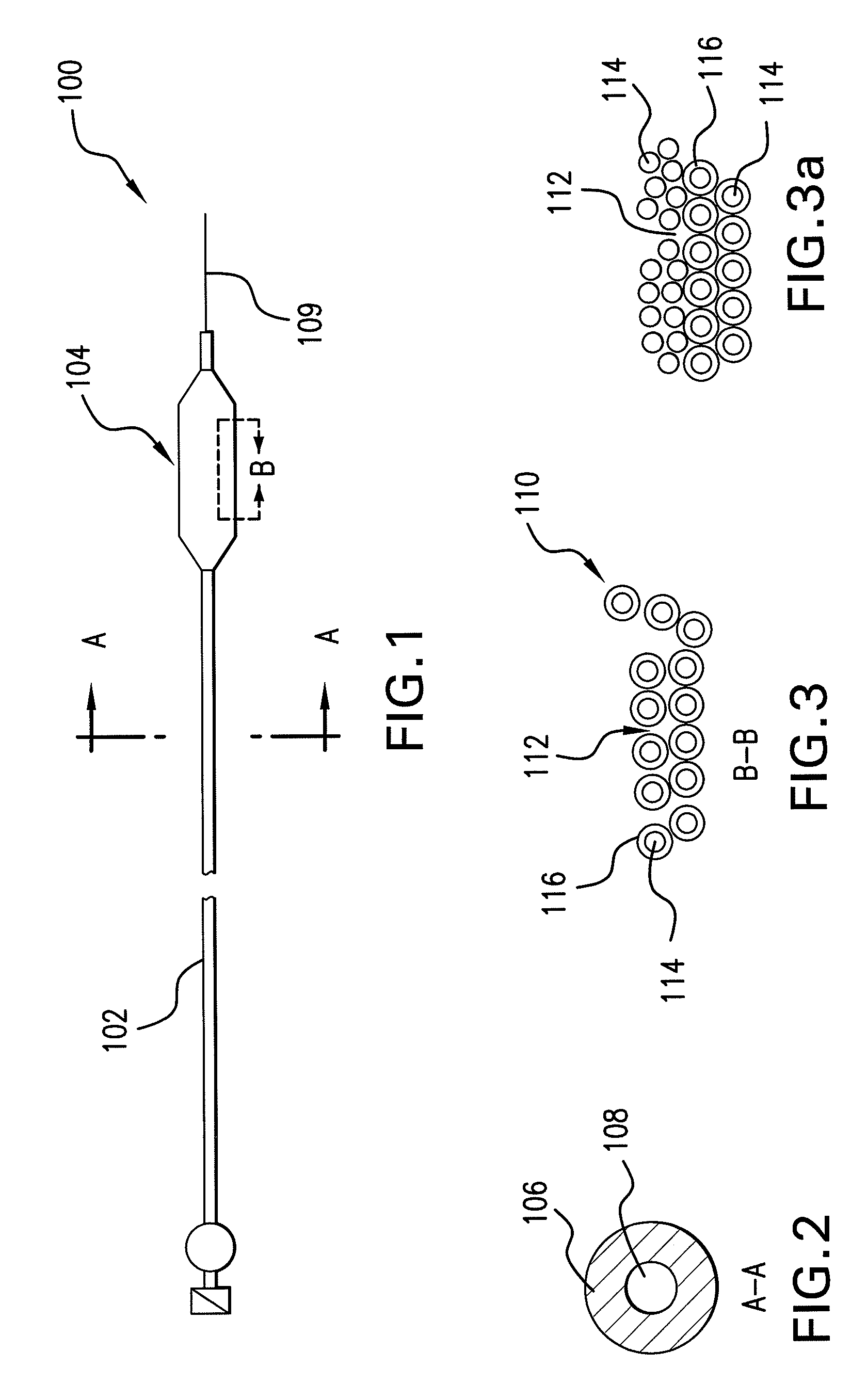Expandable Member Formed Of A Fibrous Matrix For Intraluminal Drug Delivery
a fibrous matrix and expandable member technology, applied in the direction of catheters, dilators, bandages, etc., can solve the problems of premature drug diffusion during the delivery into the body, loss of therapeutic agent and reduced dose of therapeutic agent to the target site, and systemic administration may not be desirable,
- Summary
- Abstract
- Description
- Claims
- Application Information
AI Technical Summary
Benefits of technology
Problems solved by technology
Method used
Image
Examples
example a
[0067]2 wt % high inherent viscosity Poly(L-lactide) PLLA in hexafluoroisopropanol was electrospun utilizing voltages of +10 kV (nozzle) and −10 kV (mandrel), a flow rate of 1 mL / hr, over a distance of 10 cm onto a 4.0 mm stainless steel mandrel rotating at 3000 rpm. This PLLA fiber composite in the shape of a tube with a 4.0 mm inner diameter was then annealed at 45° C. overnight in a vacuum oven to remove residual solvent and induce crystallinity. A macroscale image of the foam conduit is shown in FIG. 9.
example b
[0068]The PLLA electrospun tube segment formed in Example A was cut and placed on carbon tape, sputter coated with gold-palladium and then imaged by scanning electron microscopy. As shown in FIG. 10, surface morphology consists of micron and sub-micron diameter fibers layered on one another that include gaps therebetween.
example c
[0069]A fibrous conduit may be formed from 5 wt % of poly(L-lactide-co-ε-caprolactone) (PLCL) 50-50 in hexafluoroisopropanol solution by electrospinning. The PLCL has an inherent viscosity of 3.07 dl / g and a molecular weight of 561,000. Electrospinning equipment includes a syringe pump (Harvard Apparatus PHD2200), a glove box, two power supply units (Gamma High Voltage Research), and a mandrel control stage designed and built in-house. Volumetric flow rate from the syringe pump may be approximately 1 mL / hr and the PLCL solution may be ejected through a stainless steel nozzle with a potential of approximately 12 kV. Electrospun fibers are directed toward an 0.053-inch diameter stainless steel mandrel spaced approximately 20 cm from the electrospinning nozzle and having a potential of approximately −6 kV. The mandrel may be rotated by the mandrel control stage at 1500 RPM while the electrospinning nozzle oscillates axially over 75 passes at an average linear speed of approximately 12 ...
PUM
| Property | Measurement | Unit |
|---|---|---|
| Therapeutic | aaaaa | aaaaa |
| Hydrophilicity | aaaaa | aaaaa |
Abstract
Description
Claims
Application Information
 Login to View More
Login to View More - R&D
- Intellectual Property
- Life Sciences
- Materials
- Tech Scout
- Unparalleled Data Quality
- Higher Quality Content
- 60% Fewer Hallucinations
Browse by: Latest US Patents, China's latest patents, Technical Efficacy Thesaurus, Application Domain, Technology Topic, Popular Technical Reports.
© 2025 PatSnap. All rights reserved.Legal|Privacy policy|Modern Slavery Act Transparency Statement|Sitemap|About US| Contact US: help@patsnap.com



